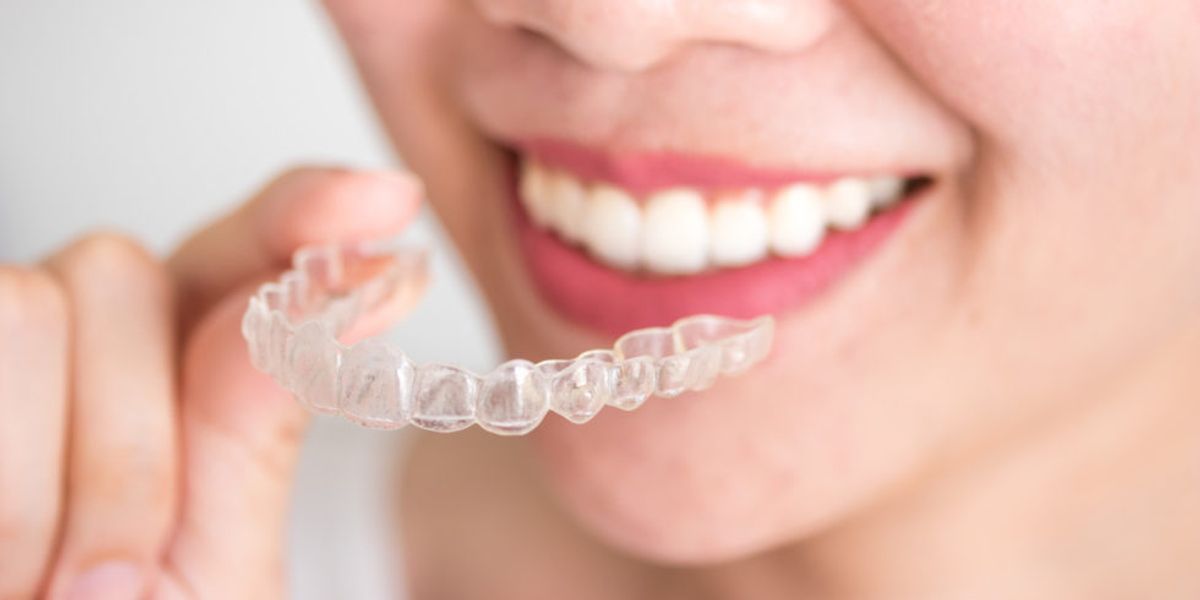January 10, 2020
Braces vs Invisalign? Plus, What Is the Average Cost of Invisalign?

Each year, almost 64% of adults visit a dentist.
According to a survey from the American Association of Orthodontists, around 1.5 million people seek out an orthodontist specifically. More adults than ever are getting braces or Invisalign. The value of having straight teeth or a pretty smile is much higher than it once was.
There’s been a new push in dental health. The biggest factor behind this is Invisalign being inconspicuous. Are you thinking about getting braces or Invisalign? If so, then you’re probably also wondering what the average cost of Invisalign is.
In this article, we’ll compare braces and Invisalign, plus delve into the costs for each, to help you make an informed decision.
What Are Braces?
These are the metal brackets and wires most people think of.
Metal brackets that are glued to your teeth make up braces. The metal brackets are tied together by wires and rubber bands. Getting braces put on takes between 1 to 2 hours and some jaw discomfort afterward is common.
About a decade ago, the appearance of braces didn’t vary. Metal comprised braces and that was it. Now, braces can come with colored brackets or even be clear to blend in better with the teeth.
What Is Invisalign?
Invisalign is a different version of bracers in that they function the same. The key difference is they’re designed to be invisible. They use clear aligner trays that are molded to your unique jaw imprint.
The aligners are a single solid piece of plastic that’s worn over your teeth like a mouthguard. This mouthpiece applies subtle pressure to your teeth to move them into the desired position.
Braces vs Invisalign
Both braces and Invisalign function the same. They are both used to straighten teeth. However, while both braces and Invisalign have the same purpose, they have different pros and cons.
Average Cost of Invisalign
The cost to get Invisalign is comparable to braces. Braces run an average of $1,800 to $5,500. Invisalign averages between $3,000 to $5,000.
However, remember that only your orthodontist will be able to determine what the cost of treatment will be. Other factors also affect the price.
If your oral health requires more attention and work, this will increase the cost. For example, if you have an overbite, it takes longer to move your teeth into the desired position. Other factors include the average dental prices in your city and how much your insurance plan will cover.
What Is the Treatment Time?
The time to be fitted with an Invisalign aligner is far shorter than that of braces. During your first consultation with your orthodontist, they take one set of impressions and photographs of your teeth.
The impressions gathered are what’s used to create a three-dimensional projection of where the teeth need to be moved in increments. An invisible aligner is then created and given to you.
Invisalign must be worn for about 20 hours a day for it to reposition your teeth as intended. The aligner is worn for two weeks and moves the teeth by about .25 to .33 millimeters. Then you replace the aligner with a new one that helps to keep moving your teeth.
On average, you will wear your invisible aligner for 6 to 18 months. The length of time depends upon your unique needs.
With braces, it takes between 1 to 2 hours to have the metal brackets glued and fitted to your teeth. Once you have braces, they’re a permanent fixture in your mouth for the next 2 years.
When to Get Invisalign
If you’ve ever looked in the mirror and noticed a new gap in your smile or maybe more crooked teeth, you may need to visit with an orthodontist.
Teeth shifting is a common problem that affects everyone of all ages. There are a variety of factors that can cause teeth shifting, such as periodontal disease and grinding your teeth.
If you’ve noticed that your teeth are shifting in position, make an appointment with your dentist to look into getting fitted for invisible aligners.
Other Pros vs Cons
The pros of Invisalign over braces is that they’re clear. If you’re embarrassed at the prospect of metal braces showing in your mouth, Invisalign is a perfect option.
Invisalign uses a clear plastic aligner tray that looks similar to a mouthguard. You wear it over your teeth throughout your regular day. It’s far more conspicuous and allows for people to not feel embarrassed about their dental work. For teenagers with low self-esteem, this is often all the reason needed to choose Invisalign.
Invisalign is also removable. When you eat and drink, you can take out your aligner tray to enjoy your food. You won’t have the issue of food getting stuck in braces or being forced to swear off certain types of food, like popcorn, for fear of damaging the braces.
The pain and discomfort from Invisalign is also almost negligible. Whereas braces are well known for causing intense pain in the jaw and even sores on the inside of the mouth.
The cons of Invisalign are few and far between.
The aligner tray can sometimes be a bit more expensive than traditional braces. Because they’re removable, there’s the chance of your aligner becoming lost or broken. You also have to brush your teeth after every meal before you can put your aligner back on.
Value Your Smile
Considering the average cost of Invisalign is similar to that of traditional braces, you should take into serious consideration going with invisible aligners.
There are many benefits to Invisalign and few drawbacks. The biggest determining factor for the success of Invisalign is you. If you don’t make yourself wear the aligners every day, they won’t work as intended.
If you want to correct your bite, straighten crooked teeth, or improve your smile, consider turning to White, Greer & Maggard Orthodontics. We’ve been in business for over 25 years in central Kentucky. We care for our community and its an integral part of our mission.
Schedule your consultation today at one of our many offices to invest in your oral health!
Continue Reading
Award-Winning Smiles
Transform Your Smile
with Expert Care
Book Your Free Consultation Now
Book Free Consult(opens in new window)